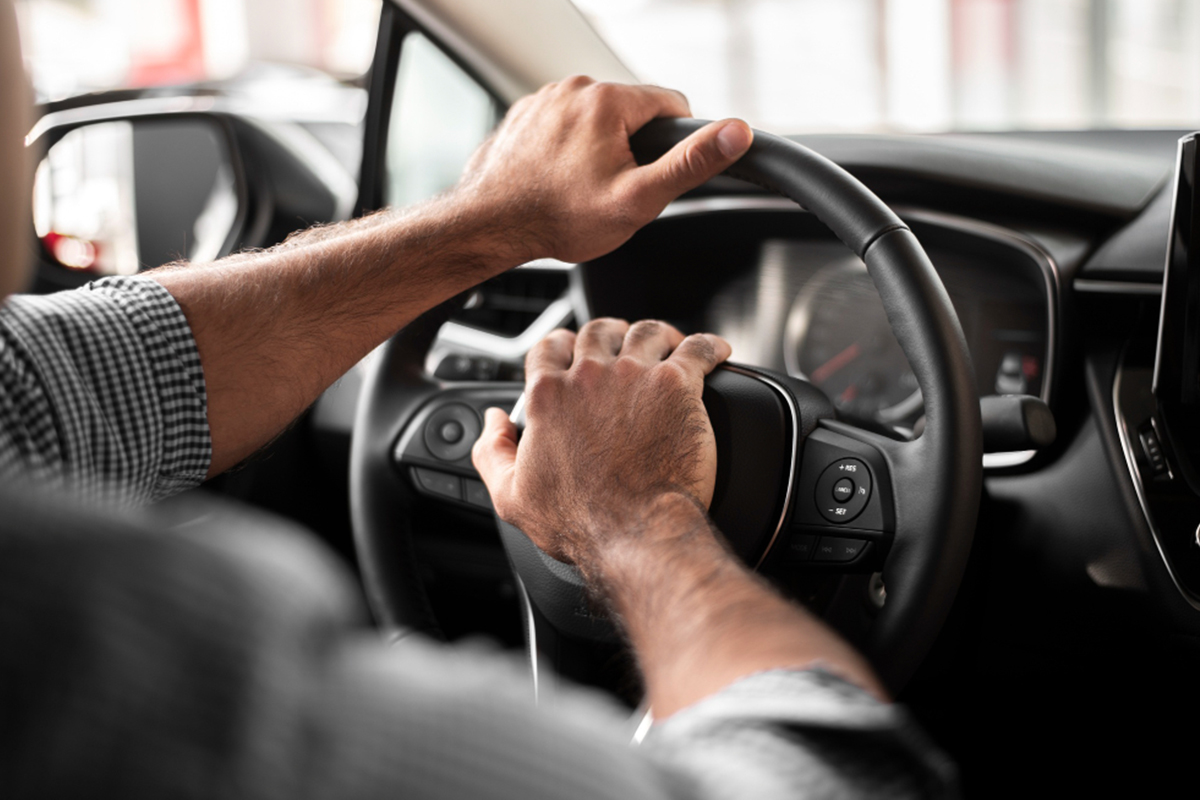If you are facing hit and run charges, you need a criminal defence lawyer in Calgary to look at your case as soon as possible. If you need specialized representation, consider visiting our Hit & Run Charge Lawyers Calgary page for more details.
‘Hit and run’ refers to when someone driving gets into an accident and leaves the scene without stopping to help injured people or leave their information. This is against the law, even if the accident was not their fault. For additional context on similar offences, you might also want to read about our Failing to Stop at an Accident Lawyers Calgary service.
This offence is officially called “Failure to Stop After Accident.” The law says that anyone driving a vehicle who knows (or should know) they were involved in an accident must stop, give their name and address, and offer help to any injured person.
This is a hybrid offence, which means it will be treated as either a summary (less serious) or indictable (more serious) offence depending on the details.
Without injuries, the maximum sentence for failing to stop after an accident is 5 years. For an accident that caused injuries, the maximum jumps to 10 years. In the most serious cases involving death, the maximum sentence is life imprisonment.
Strategic Criminal Defence is a top Google-rated criminal defence firm in Calgary, with over 500 5-star reviews. Our firm, and our experienced legal team, have defended clients in over 10,000 criminal cases, a record you can review in our Successful Cases section. Leveraging our extensive network of lawyers and decades of experience, we craft defence strategies to help those accused of hitting and running beat the charge.
The lawyers at Strategic Criminal Defence are both highly experienced and dedicated to defending your rights and future in the face of these charges. For immediate legal assistance, please contact us today by calling (403) 719-6410.
Key Takeaways
- “Failure to Stop After Accident” is the legal term for hit and run. It means leaving the scene of an accident without giving your information or helping the injured.
- If you are in an accident, the law says you have to stop, identify yourself, and help.
- The severity of the charge depends on how bad the injuries are. If someone dies, the person could face a life sentence. Cases with injuries can lead to up to 10 years imprisonment, and, only property damage, up to 5 years.
- Most of the time, bail conditions include not driving, giving up your driver’s license, and checking in with the police on a regular basis.
- If you can prove that you didn’t know an accident happened or that you left for an emergency, could beat these charges with the right legal defence.
- Other possible defences are problems with your identity, not having enough evidence, or showing that you had to leave the scene for a good reason.
How Our Lawyers Help With a Hit & Run Charge
Our lawyers can help you right away if you think you might be arrested, offering legal advice even before charges are filed. For insights on early intervention strategies, you might also consider our Pre-Charge Legal Advice Calgary page.
Our lawyers can get video from security cameras, witness statements, and information about how the accident happened. This could show that you didn’t know about the accident. It could also show that you had a good reason to leave.
Our lawyers will be there for you at every court appearance and will explain every part of the complicated criminal justice system.
We can also give you strong legal representation in court, question key witnesses, and make the best possible case for your defence.
Examples of Hit & Run Charges
Here are some real-world examples of what could lead to hit and run charges in Calgary:
- A driver hits a pedestrian in a crosswalk, causing injuries. Instead of stopping to help and provide information, the driver speeds away from the scene. Police later identify the vehicle through security camera footage.
- After sideswiping a parked car and damaging its side mirror and door, a motorist quickly drives away without leaving a note with contact information. A witness records the licence plate, leading to charges of failing to stop after an accident involving property damage.
- A truck driver backs into a light pole in a parking lot, knocking it over. Despite noticing the damage, the driver leaves without reporting it to the property owner or police, resulting in charges when identified through surveillance video.
Consequences of a Hit & Run Charge
If you are charged with a hit and run, which is legally known as “Failure to Stop After Accident,” the penalties depend on whether the accident caused damage to property, injuries, or death.
- This is considered a hybrid offence. This means that the Crown prosecutor can choose to go ahead with either a summary conviction (for less serious cases) or an indictment (for more serious cases). This choice will affect the possible punishments you could get.
- For accidents involving only property damage, there is no minimum jail sentence, but if proceeded by indictment, you could face up to 10 years in prison.
- For cases without injuries that are proceeded summarily, the maximum sentence is 2 years.
- When a hit and run hurts someone else, the consequences are far more severe. If you are charged by indictment, the longest time you could spend in jail is 14 years. If the accident killed someone, you could face life imprisonment.
- In addition to these criminal penalties, a hit-and-run conviction usually means that the person can’t drive for a certain amount of time. Your insurance rates will also go up, and you’ll have a criminal record that could make it harder to get a job, travel, or find a place to live.
Hit & Run Charge Defences
If you’re facing a hit-and-run charge in Canada, it can be scary, but there are a few legal defences that might apply to you. Our lawyers can look at the details of your case and figure out the best way to handle it.
These are some of the most common defences that could help you fight a hit-and-run charge:
- Not Knowing: The Criminal Code says that you had to have known or been careless about whether an accident happened. Some accidents are so small that a normal person wouldn’t even see them. For instance, if you lightly bumped into a car in a parking lot and didn’t feel anything, or if the road conditions or noise from the car made it hard for you to hear or feel a small crash, you might have a good defence.
- Identity Problems: The police sometimes arrest the wrong person for a hit and run. If you weren’t driving when the accident happened, you have a good defence. If your car was stolen, someone else was borrowing it, or there was a case of mistaken identity, this could happen.
- Reasonable Excuse: The Criminal Code says that you can have a “reasonable excuse” for not stopping after an accident. This could happen if you left the scene for a valid emergency reason. You might have a good reason if you were rushing an injured passenger to the hospital after an accident or if you left for a short time to get cell phone service to call for help. To use this defence, you have to show that you didn’t just run away to avoid taking responsibility.
Hit & Run Charge Investigation
When police look into a hit-and-run, the first thing they do is talk to the victims, witnesses, or other drivers who stayed at the scene.
- Next, they will look for physical evidence at the scene of the accident. They look for broken parts on the car, paint transfers, fluid leaks, or tire marks that could help them find the car that has gotten away.
- They take photos, and measurements at the scene, and collect any video from nearby buildings, or traffic cameras pointed to the area that are available to them.
- Then, police talk to people who saw the accident and ask them to describe the car, the driver, and the direction the car left.
- The police will then look for the suspect vehicle if they have enough information about it.
- Finally, when investigators find a suspect car, they look for damage that matches the accident. If a pedestrian was hit, they might take paint samples, measure the damage, and look for biological evidence.
Bail Conditions for Hit & Run Charges
If you were arrested for not stopping after an accident (hit and run), you are likely required to follow certain bail conditions while you wait for your court dates.
- A driving ban is the most common condition for hit and run charges. This rule still applies even if you still have a valid driver’s license.
- The court or police may also ask you to give up your driver’s license.
- For more serious hit and run cases, you could be put under house arrest or strict curfew conditions. This could mean that you can only leave your home for work, medical appointments, or legal meetings.
- The court will tell you to check in with a bail supervisor or probation officer on a regular basis. How often you need to report depends on how serious your case is.
- If you plan to move or change your address, you need to tell the court.
- If you break any of these bail conditions, you will be charged with a different crime and your bail will be revoked. You will then be held in jail until your trial.
For more information, visit our page on The Bail Hearing Process in Calgary.








